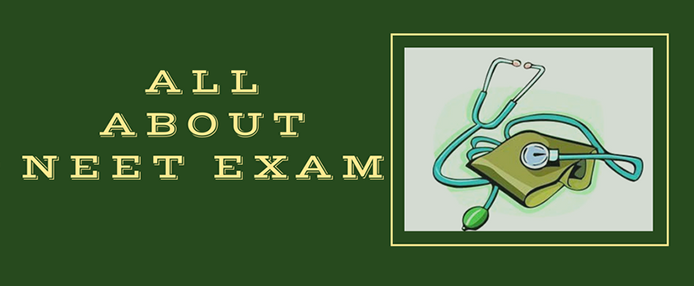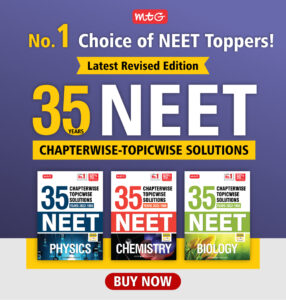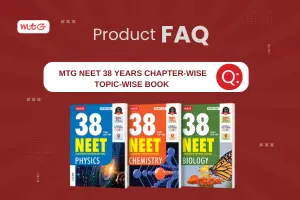
National Eligibility cum Entrance Test is a national level single medical entrance examination conducted by CBSE (Central Board of Secondary Education) to provide admissions to eligible candidates into MBBS, BDS, MD, MS courses in India. This exam has replaced All India Pre-Medical Test (AIPMT) and other medical entrance exams.
History of NEET
Do you know the history of NEET- when it came into existence? Here you will get to know all about this exam from the very beginning. It was December 2010 when the Gazette of India published by MCI (Medical Council of India) shocked the whole nation with news about the modifications to the “Regulations on Graduate Medical Education, 1997” and the new modification as “Regulations on Graduate Medical Education, 2010”. This new modification was basically for introduction of single eligibility cum entrance exam for admission to MBBS courses i.e. NEET, its qualification & eligibility criteria. In 2012, everything was set, MCI was prepared and only a step far from reality. Supreme Court also gave the green signal to the Centre and the Medical Council of India (MCI) to hold a common entrance test for the MBBS and PG courses but several states including Andhra Pradesh, West Bengal, Gujarat, Tamil Nadu strongly opposed the change as there was a huge variation in the syllabus proposed by MCI and their state syllabus.
National Eligibility cum Entrance Test was announced to be held by the Government of India for the first time on 5th May, 2013 for admission to both Undergraduate and Postgraduate Medical courses. But on 18th July, 2013, Supreme Court cancelled the exam and announced the decision in favor of 115 petitions that MCI could not interfere with the admission process done by colleges. The exam was scrapped in 2013 but MCI didn’t lose its efforts and achieved the success to conduct a single common medical entrance exam in 2016 across the country.
In 2016, it was conducted in two phases i.e. NEET-I and NEET-II on May 1 and July 24 respectively. There was no difference in the AIPMT examination pattern and NEET syllabus & pattern in 2016. The paper pattern was same as that of AIPMT 2015. The paper had 180 questions each worth 4 marks. All questions were objective type with single correct option. If we talk about subject wise, then there were 45 questions from Physics and Chemistry each, and 90 questions were from Biology (Zoology and Botany sections of Biology).
NEET vs AIPMT
NEET is a national level single exam and covers a larger range of seats in the medical colleges. AIPMT had two stages to qualify the exam. The first stage, Prelims, followed by the Main exam. Previously, AIPMT was conducted for admission to 15% of the total seats in all medical and dental colleges in India run by Central and State governments, local authorities except in the states of Andhra Pradesh, Jammu and Kashmir and Telangana whereas NEET covers 100% seats for admission in all medical colleges across the country.
Know more: NEET eligibility marks
From this year now, a student can take more than 3 attempts. There is no bar for attempts but age limit! The upper age limit for a candidate seeking admission through NEET 2018 is 25 years as on December 31, 2017. The question paper is now available in English and nine Indian languages – Hindi, Gujarati, Marathi, Odiya, Kannada, Tamil, Telugu, Assamese, Kannada, so as to make sure that the students studying in their regional languages do not face a problem. Language shall not be a barrier for your growth.
Opinion:
 MTG is a well-known publisher which provides India’s best study materials for NEET. MTG provides medical entrance exam books depending on the requirement of the candidate. One of the best reference books of MTG recommended by experts is Complete NEET Guide chapterwise topicwise for Biology, Physics, Chemistry. This book is for CBSE and Non- CBSE students and gives an advantage of thorough practice of all questions chapter wise. It covers complete syllabus and includes all the chapters of Class XI and XII, 10-year chapterwise AIPMT/NEET questions (2008 – 2017) with solutions are also given in this book. This gives you deep understanding about weightage of the chapter and number of questions asked in the exam.
MTG is a well-known publisher which provides India’s best study materials for NEET. MTG provides medical entrance exam books depending on the requirement of the candidate. One of the best reference books of MTG recommended by experts is Complete NEET Guide chapterwise topicwise for Biology, Physics, Chemistry. This book is for CBSE and Non- CBSE students and gives an advantage of thorough practice of all questions chapter wise. It covers complete syllabus and includes all the chapters of Class XI and XII, 10-year chapterwise AIPMT/NEET questions (2008 – 2017) with solutions are also given in this book. This gives you deep understanding about weightage of the chapter and number of questions asked in the exam.































